This article was co-authored by Pippa Elliott, MRCVS. Dr. Elliott, BVMS, MRCVS is a veterinarian with over 30 years of experience in veterinary surgery and companion animal practice. She graduated from the University of Glasgow in 1987 with a degree in veterinary medicine and surgery. She has worked at the same animal clinic in her hometown for over 20 years.
This article has been viewed 139,373 times.
When a calf is born, you will need to determine his or her sex to update you records and decide what will be done with the calf. The calf will be either male (a bull calf) or female (a heifer calf).
Steps
Checking the Calf after Delivery
-
1Make sure the mom cow will allow you to get close to her calf. Sometimes cows will be very protective after birth, even if you’ve been assisting them. Before you get ready to inspect the cow, make sure both the cow and calf are relatively calm and understand you are still there to help.
- If you sense the cow is going to attack you, back off.
- If the cow is positioning herself to separate you from her calf, let her.
- If the cow kicks at you at all, come back later.
-
2Check to see if the calf is healthy and is breathing. Before sexing the calf, you want to check its vitals and make sure it can breathe. Check to see if the calf can breathe through its nose and mouth. Make sure there are no other complications that need to be tended to before checking the sex.
- Clean the afterbirth from nose of the calf.
- Clean the afterbirth from the mouth of the calf. Make sure there are no obstructions.
- Check to see if the calf's respiration is not labored and the pulse is regular at 100-140 beats per minute.
Advertisement -
3Lift the tail to sex the calf. If the cow allows you to get close to her calf, you can quickly sex the calf. Lift the calf's tail and check the genitalia.
- Males have a scrotum containing testicles and a sheath containing a penis, located near the belly. It is possible to confuse the umbilical cord for a penis, so you should focus on locating the testicles.
- Females have a vulva, located closer to the tail. The best way to tell if the calf is a female is to note the absence of testicles.
Checking the Calf from Afar
-
1Watch where the calf urinates from. If the mother cow will not allow you to get close enough to check the calf, you can try to watch and see where on the body the calf appears to urinate. This might take a lot of time, but it will give you a very good indication of the sex of the calf. It is also possibly the safest way to sex the calf, as it provides distance between you, the calf, and the cow.
- Make sure to bring binoculars and do this during the day.
- Heifers urinate out from from the vulva, located just under the tail.
- Bulls urinate from the penis, which is situated further forward than the vulva on a heifer, underneath the belly.
-
2Observe the size and shape of the calf’s head and its topline. The topline is the top line of the cow from the head to its butt. These observations will give you a better idea of the cow’s sex.
- Compare the calf to other calves you might have or to pictures.
- Bull calves will have a heavier jawline.
- Bull calves will have a burly and more masculine topline.
- Cow calves will have a smaller jawline.
- Cow calves will have a softer topline.[1]
-
3Check the muscle tone and overall shape of the calf’s neck and shoulders. The muscle tone and the calf’s shoulders will also give you a better idea of the calf’s sex. This provides a non-invasive way of sexing the calf.
- Compare the calf to other calves you might have or to pictures.
- Female calves often have longer, narrower necks.
- Female calves will have smoother shoulders and a more angular shape to their body.
- Bull calves will have thicker necks.
- Bull calves will have more robust shoulders.
-
4Examine the calf’s pelvis, and compare it to other calves. The pelvis shape will give you a much better idea of the sex of the calf. Heifer calves will have a more robust pelvis than bull calves. This, combined with previous steps, will provide certainty on the calf’s sex.
References
- ↑ www.msucares.com/pubs/publications/p2558.pdf
About This Article
If your cow has recently given birth to calves, you’ll need to work out their sex for your records. All you need to do is lift each calf's tail and check its genitalia. Females have a vulva while males have a scrotum and penis. Look for the scrotum in males so you don’t confuse its umbilical cord for its penis. Always move slowly and carefully when checking, since mother cows can be very protective over their newborn calves. If she seems aggressive, back off and try again later. For tips from our Veterinary co-author, including how to sex a calf by its jawline and the shape of its head, read on!

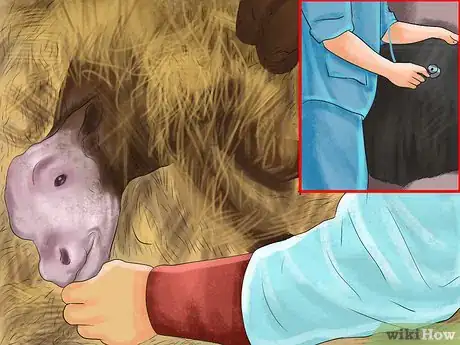


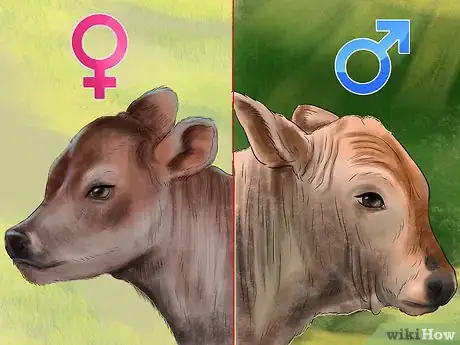

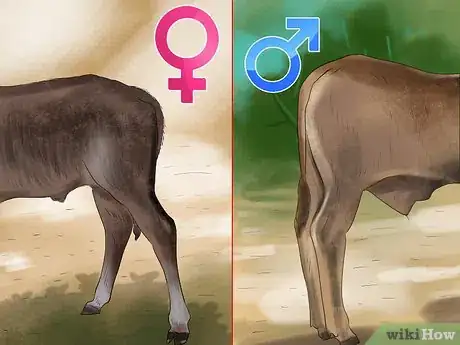
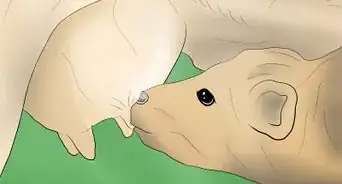
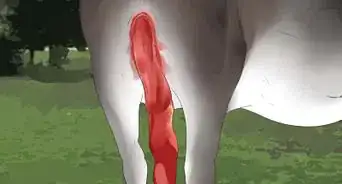
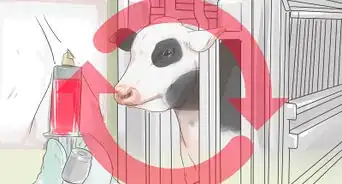




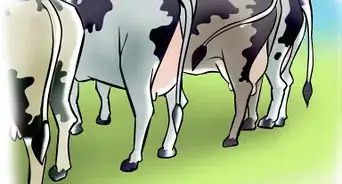
-in-Cattle-Step-6.webp)

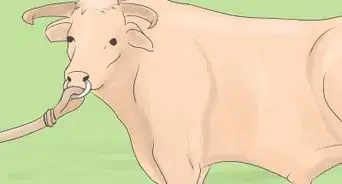

















































Medical Disclaimer
The content of this article is not intended to be a substitute for professional medical advice, examination, diagnosis, or treatment. You should always contact your doctor or other qualified healthcare professional before starting, changing, or stopping any kind of health treatment.
Read More...